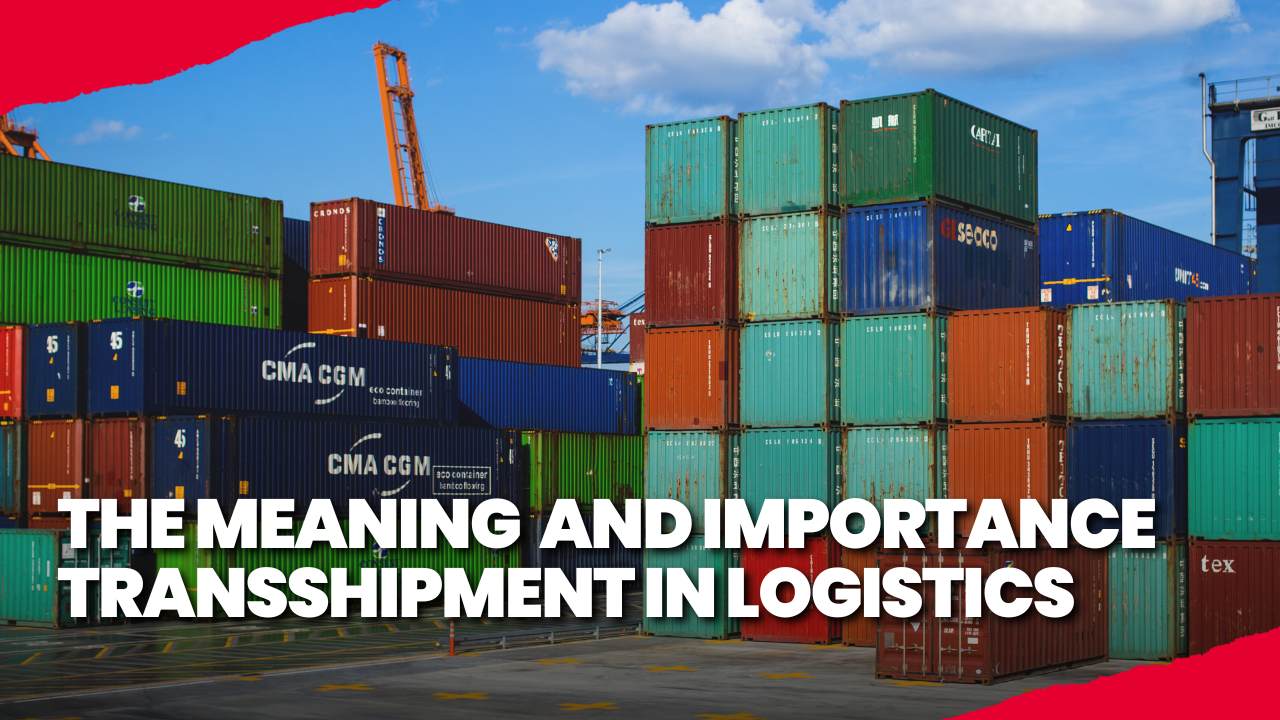
The Meaning of Transshipment in international shipping is simple but powerful: it is the process of moving containers or commodities from one ship to another at a transit point en route to their final destination. Whether switching transport means or moving containers between boats at a central hub, this process is an integral part of modern logistics.
The meaning of transshipment is more than just moving goods from one ship to another. It’s about finding the most innovative and cost-effective way to deliver cargo when a direct route isn’t possible. Instead of going straight from the starting point to the final destination, the goods stop at a central hub like Singapore or Dubai. Packages can be combined for easier access to smaller or farther away ports and more efficient use of vessel capacity.
Why Is Transshipment Necessary for Businesses?
It’s not just a quick fix to transship goods; it’s a wise, strategic decision. The transhipment meaning lies in helping businesses cut costs and improve efficiency.
- Shipping through a hub can combine smaller packages into greater loads or separate them into better routes, lowering freight cost per unit, Pelican Containers.
- Some destinations do not have direct shipping linkages, which is a challenge for route optimization. Companies can make adjustable networks with transshipment hubs to reduce deadhead runs and fill frequency gaps.
- Transshipment lets cargo be moved to smaller ships that can reach remote places more quickly; big ships avoid small ports.
Transshipment opens up international possibilities and lowers running costs, as shown by these factors, which highlight the transshipment meaning in international trade.
Procedures for Transshipment
Here’s a simplified structure that shows what transshipment means in reality.
- In the beginning, goods are loaded into the vessel A.
- Vessel A goes to a hub for transshipment.
- Cargo is taken off of Vessel A.
- It might be put away for a short time at the hub.
- The cargo will be placed onto Vessel B or another mode, like a railroad or truck.
- The ship B keeps going to the last Port of Discharge (POD).
Also Read This: How Footwear Export from India is Growing in 2025
Types of Transshipment
There are different kinds of transshipment.
1. Ship-to-ship (sea)
Goods stay in a container but go straight from one ship to another. This happens a lot at maritime hubs.
2. Sea-to-land or multimodal
At the hub, cargo moves from a ship to a truck or train for on-land transport. This is often called transloading, but the names are not the same.
3. Consolidation
A process called “consolidation” or “deconsolidation” groups or separates cargo from different places that are traveling separately. This makes better use of the load and improves adaptability.
The larger meaning of transshipment extends beyond simply changes in vessels, and understanding these categories helps clarify that.
What are the expertise and advantages?
Transshipment has strategic benefits, as mentioned below.
- Shipping networks that work well allow shippers to create lines that cut down on empty runs and better use vessels.
- Hubs like Singapore, Shanghai, and Busan make it easy to reach more distant markets.
- Fewer direct routes and better consolidation mean lower total costs. Freight rates also go down because of competition in the bases.
Managing customs procedures, handling goods carefully to avoid damage, and dealing with delays due to port congestion or bad weather are all things that make transshipment more difficult.
What are the concerns about risks and regulations?
It is legal and common to transship goods, but it can be a problem in the following situations.
In fisheries, at-sea transshipment is used to move catch through the ocean. This method has been connected to illegal, unreported, and unregulated (IUU) fishing, forced labor, and smuggling.
If you want to avoid paying taxes on goods, you can send them through third countries on purpose. This is called “origin washing” or fraud in trade policy. The U.S. has set in place fines of up to 40% tariffs on cases that are thought to be illegal.
These risks show why governments are stepping up their oversight and making transshipment routes more open.
Wrapping It Up
The meaning of transhipment goes far beyond just moving ships. It includes transportation planning, lowering costs, going international, and even modern trade’s moral and legal aspects. When businesses understand the meaning of transshipment, they can improve their supply chains, logistics companies can manage global shipping better, and governments can spot and prevent fraud. As long as foreign trade grows, transshipment will be a key component of getting goods from one place to another quickly and easily.
FAQs
Moving cargo or containers from one ship or mode of transportation to another at a hub before they get to their end destination.
Transshipment usually only means moving from one transport to another within the same container. Transloading usually means moving goods from one mode of transport to another, like from a ship to a truck.
For better cost savings, route freedom, access to smaller ports, and better load consolidation, this is a smart way to handle logistics.
Ships can get damaged during transfers, there could be delays because of heavy traffic or bad weather, and the system might be misused in ways like illegal trade or tax evasion.
Also Checkout Our YouTube Channel: @limeinstituteofexportimport






